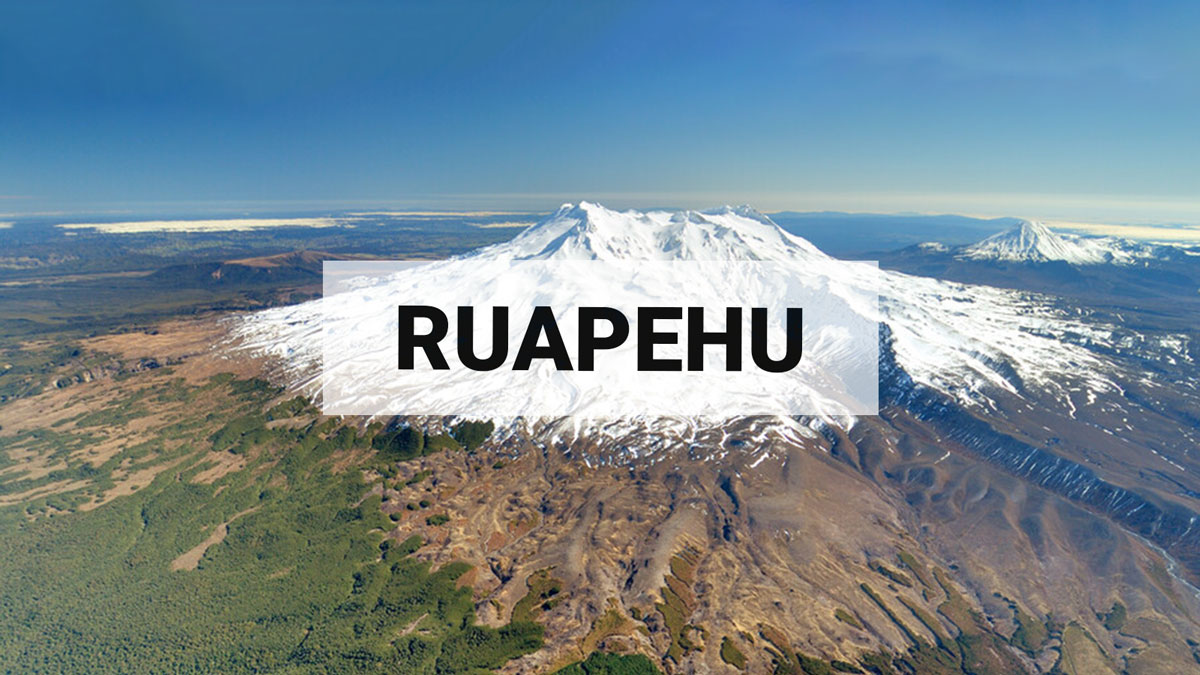
Mt Ruapehu’s crater lake heating is accompanied by strong volcanic tremor. Volcanic Alert Level raised to Level 2.
Another heating phase has started at Mt Ruapehu and Crater Lake (Te Wai ā-moe) temperature has now reached 31 °C. This temperature rise has been accompanied by strong levels of volcanic tremor. The Volcanic Alert Level at Mt Ruapehu is raised to Level 2 in response to these changes.
Typically, over periods of months, Ruapehu’s crater lake undergoes heating and cooling cycles. A new heating cycle has started and has been accompanied by strong levels of volcanic tremor (volcanic earthquakes).
We consider there is an increased likelihood of eruptive activity as strong tremor is indicating increased gas flux through the system. Despite an increase in gas flow, the lake temperature is only responding slowly, suggesting a partial blockage may exist in the vent beneath the lake. This could allow pressure to build up within the volcano.
The interpretation of this activity is consistent with elevated volcanic unrest and therefore we have raised the Volcanic Alert Level to Level 2.
In January 2022 the lake temperature peaked at 32°C. Following this peak through to late February the lake temperature declined to around 27-28 °C. Since 13 March a heating trend has become established, and the lake temperature is now 31 °C. As sometimes occurs during these heating phases, volcanic tremor activity has been recorded.
The modelled heat flow into the lake is currently estimated at about 330 MW (megawatt), up from 100 MW in February 2022.
The lake is currently overflowing into the Whangaehu river, but the flow level is believed to be minor. The lake colour is expected to change to a darker grey colour as sediments on the lake floor are disturbed during the influx of hot fluids heating the lake.
The Volcanic Alert Level rises to Level 2 which reflects the current level of elevated volcanic unrest. The Volcanic Alert Level should not be used to forecast future activity. However, at Volcanic Alert Level 2, eruptions are usually more likely than at Volcanic Alert Level 1.
The Aviation Colour Code remains at colour Green.
Mt Ruapehu is an active volcano and has the potential to erupt with little or no warning when in a state of elevated volcanic unrest.
Volcanic Alert Level 2 indicates the primary hazards are those expected during volcanic unrest; steam discharge, volcanic gas, earthquakes, landslides and hydrothermal activity. While Volcano Alert Level 2 is mostly associated with volcanic unrest hazards, eruptions can still occur with little or no warning.
For information on access to the Mt Ruapehu area, please visit the Department of Conservation’s websites on volcanic risk in Tongariro National Park and follow their Facebook page for further updates.
GNS Science and the National Geohazards Monitoring Centre continue to closely monitor Mt Ruapehu for further changes.
Craig Miller
Duty Volcanologist
Media Contact: 021 574 541 or media@gns.cri.nz
Footnote: You might notice we've made a tweak to the name of these bulletins - from Volcanic Alert Bulletin to Volcanic Activity Bulletin. We've done this because we think it better reflects the purpose of these Bulletins, which can also include more general updates. Any queries, please let us know at media@gns.cri.nz